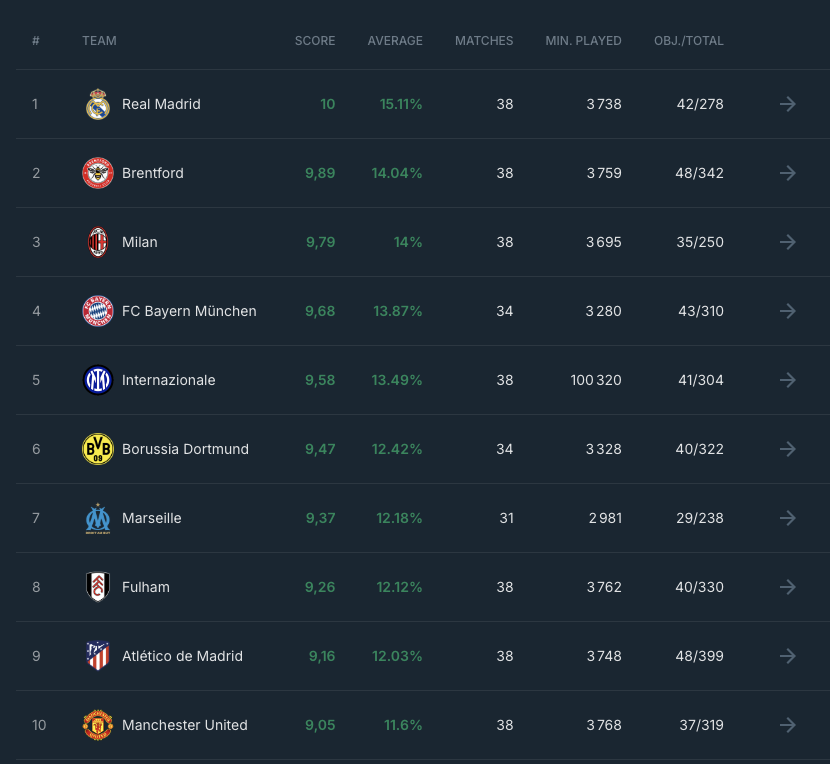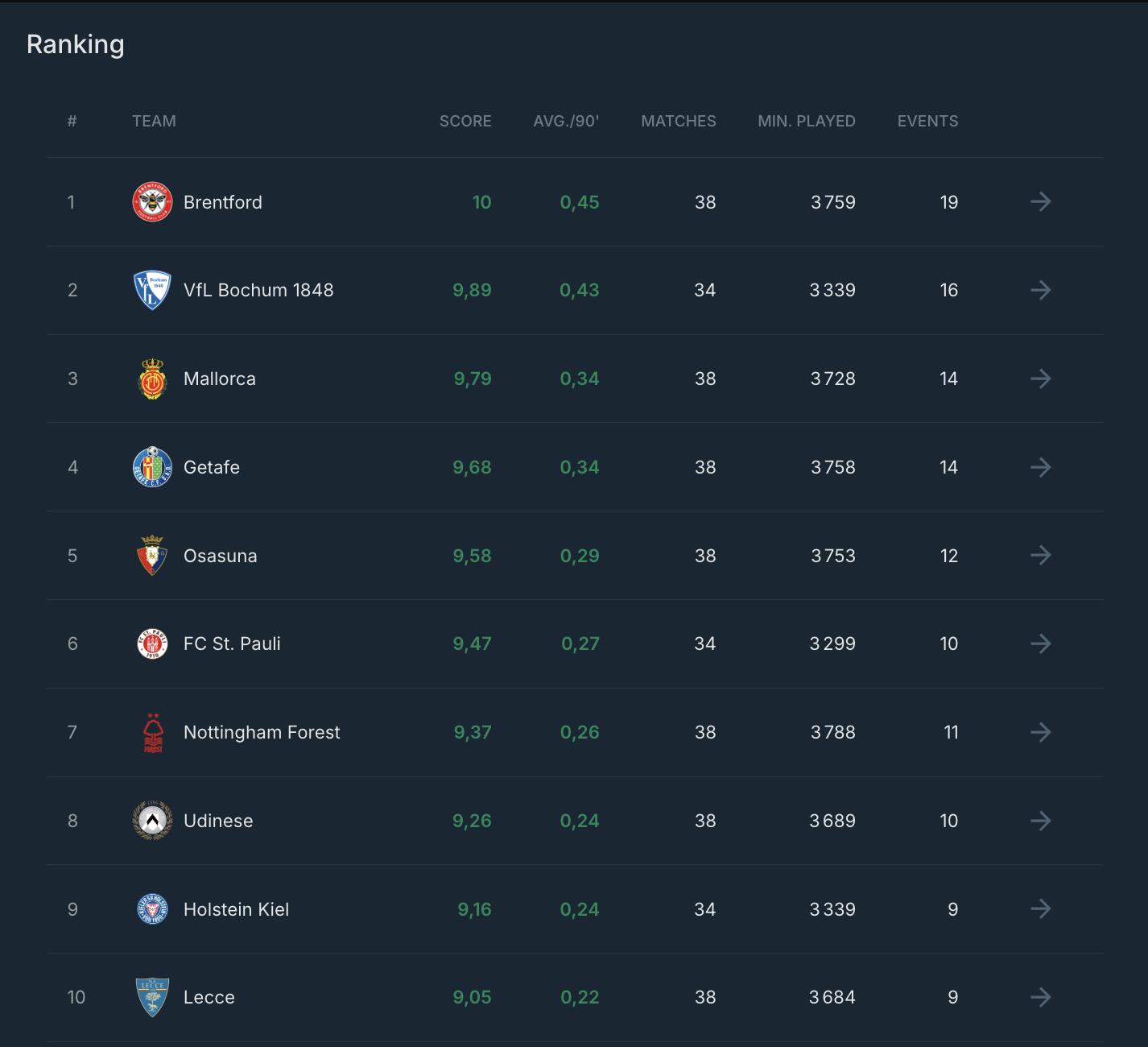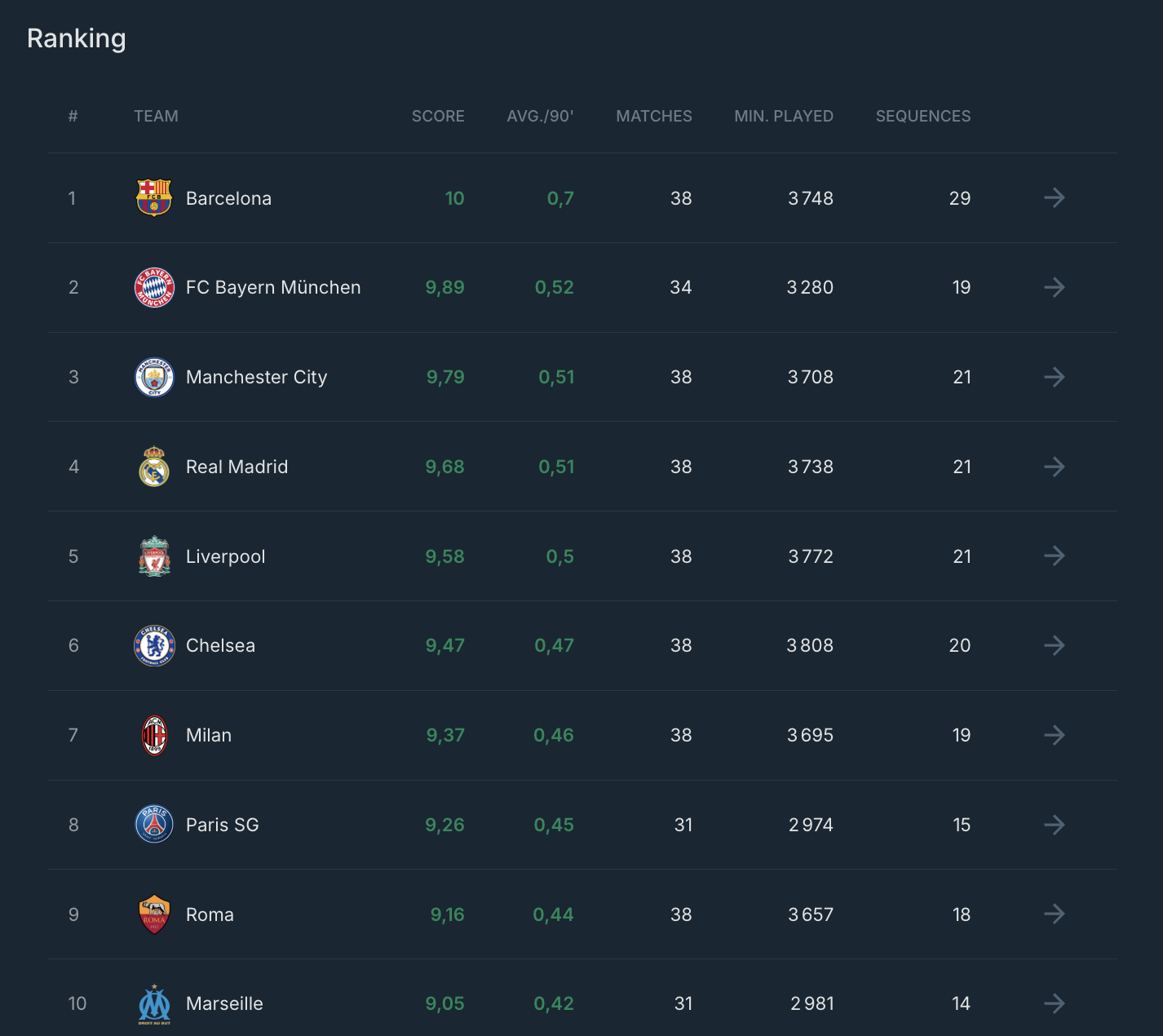Despite the increasing sophistication of set-piece design, throw-ins remain one of the most overlooked restarts in football. Yet they occur more frequently than corners, free-kicks, or goal kicks — often in valuable attacking positions.
Using our trackers that are powered by AI, we analyzed over 50,000 throw-ins across the 2024/25 season in Europe’s top five leagues. Our goal: to identify patterns, benchmarks, and outliers that might inform training design, match prep, and recruitment.
1. Shot-ending throw-ins: Benchmarking productivity across the top 5 leagues
Our first analysis focused on how often an attacking half throw-ins result in shots or goals, either directly or through sustained build-up.
.png)
The average across the top five leagues is just over 8% — a low baseline, suggesting most clubs treat throw-ins as neutral moments.

But the outliers tell a different story. Real Madrid (15.1%), Brentford (14.0%), and Milan (13.8%) more almost double the benchmark. In these clubs, throw-ins are not incidental; they are planned, rehearsed, and integrated into attacking structures.
These teams show that you can convert throw-ins into attacking moments, and clubs failing to match this level of execution may be leaving goals on the table.
2. Long throw-ins as direct attacking weapons
Next, we look at "The Rory Delap Effect" of teams launching long throws straight into the mixer. We isolated long throw-ins delivered directly into the box, resulting in a shot within 5 seconds. These "corner equivalent" long throws can be a dangerous attacking lever.
.png)
Brentford lead with 19 such events, but what’s notable in the top 10 is that Bochum, Mallorca, Osasuna, Getafe — all clubs outside the elite tier — use long throws to generate high-quality chaos in the box.

While the aesthetic of this approach is sometimes criticized, the data tells us that for clubs with physical aerial profiles or limited possession dominance, the long throw is a viable attacking lever.
There is tactical legitimacy in direct long throw approach, and we are seeing more elite teams starting to deploy this tactic by recognizing that there are marginal gains to be made.
3. Throw-ins as the first pass in structured build-up
Finally, we examined throw-ins taken in a team’s own half, followed by 5+ successful passes, culminating in a goal attempt. These sequences indicate a patient, possession-oriented philosophy.
.png)
The top five of Barcelona, Bayern Munich, Manchester City, Real Madrid, and Liverpool, align almost perfectly with clubs known for structured positional play. These teams, a throw-in is not just a restart, it’s the first pass in a carefully mapped attacking phase.

For teams with strong automatisms in build-up, throw-ins represent continuity, not interruption. They are treated with the same discipline as goal kicks or centre-backs recycling possession.
Redefining the throw-in as a tactical event
Across all three analyses, one theme is consistent: throw-ins are a blind spot in match preparation, yet elite teams are actively optimizing them.
By benchmarking across Europe’s top five leagues, we can quantify that difference, and it’s substantial. The best-performing clubs turn over 2–3x more attacking output from throw-ins compared to the average.
At MyGamePlan, we’re building tools that allow clubs to treat every event, including throw-ins as an opportunity to gain insight, improve execution, and find edge. Whether you're focused on set-piece design, scouting, or pre-match planning, we believe throw-in analysis belongs on your radar.




